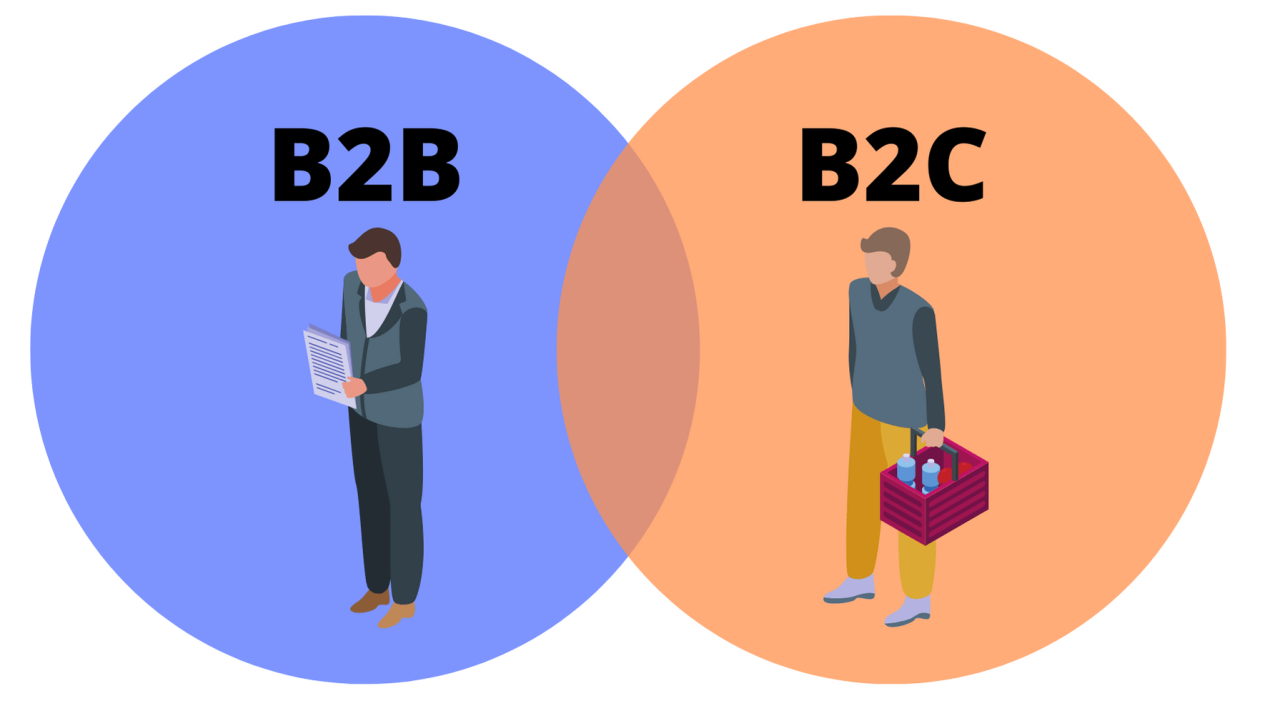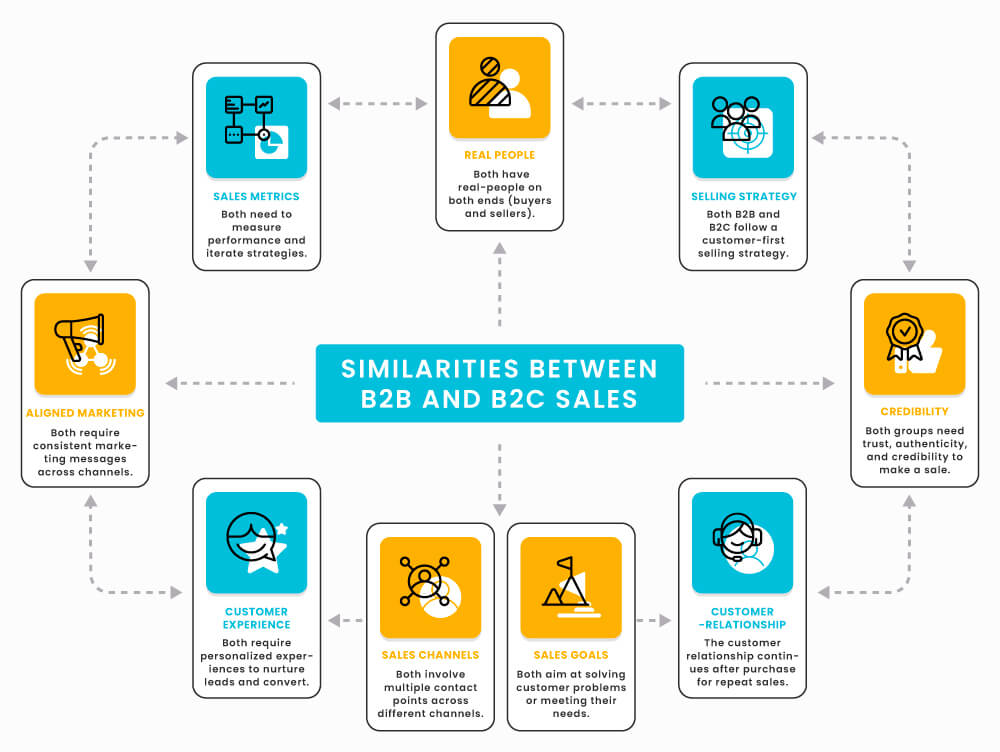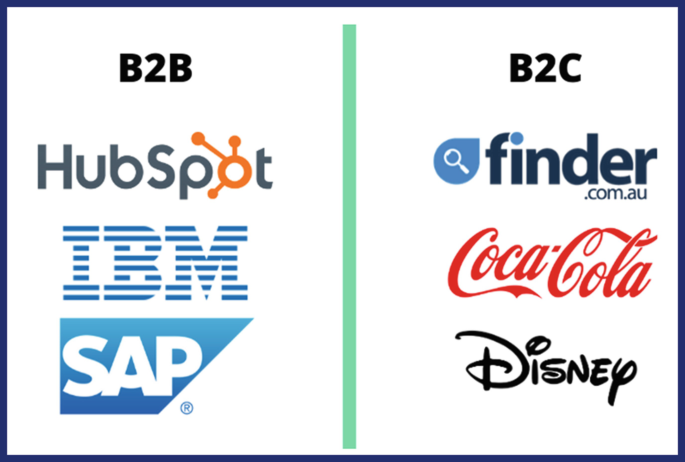Marketing is telling the story. But did you realize that the method you use to convey your story could be completely different depending on who you’re speaking to? This is what makes B2B (B2B) or consumer-to-business (B2C) marketing fascinating!
Let’s explore the two kinds of marketing and discover the differences between them in their way. What makes each distinct?
B2B marketing happens when a company sells its goods or services to another company. Imagine baking bread for the grocery store. The store sells the bread to me and you. The baker performs B2B marketing since they’re offering their products to businesses but in contrast to directly selling them to the public.
B2C marketing occurs when a company sells its items or products directly to customers. For instance, if you purchase a toy from an online store, it’s B2C marketing—the store selling the toy directly to you as the buyer.

We now know about what B2B marketing and B2C marketing are; we can examine the significant distinctions between these two types of marketing.
B2B Marketing: In B2B marketing, companies communicate with other companies. This means they must connect with people who make the decisions within the organization, such as the managers and buyers.
B2C Marketing: “In B2C marketing, companies speak directly with people like us and you. They have to be able to communicate our preferences and desires.
B2B Marketing: The story of B2B marketing usually revolves around the ways in which a product or service can aid a company in saving time or even money. The focus is on the facts and figures.
B2C Marketing: The tale in B2C marketing is typically about the ways in which a product or service can improve our lives or be more enjoyable. It’s more about emotions and experiences.
B2B Marketing: Selling to a different business requires time. There are presentations, meetings, and plenty of thought before making a final decision.
B2C Marketing: Selling to consumers is usually quicker. We find something we like, and we purchase it, often without thinking about it.
B2B Marketing: The content of B2B marketing is usually comprehensive and informative. Whitepapers, as well as case studies and reports, are typical.
B2C Marketing: The content of B2C marketing tends to be more exciting and entertaining. Think blog posts, videos, and social media posts.
B2B Marketing: “In B2B Marketing, establishing long-term relationships is the key. Companies want to work with people they can trust for many years.
B2C Marketing: For B2C marketers, customer loyalty can also be a crucial factor, but it could be affected by trends and promotions. Customers may switch brands if they discover a better offer.

Although B2B marketing and B2C marketing are two different things, they do have things they share.
Both B2B and B2C marketers must understand their customers. This involves knowing their preferences as well as what they require and the way they make their decisions. This assists in crafting messages that resonate with people.
In our modern world and the present, both B2B and B2C marketing depend heavily on the internet and digital tools. Email, social media websites, and emails are essential for reaching out to businesses and individuals alike.
Establishing solid relationships is essential for both types of marketing. It doesn’t matter if you’re a business or a customer; people are inclined to purchase from trusted brands.
Let’s discuss some tricks and tips to help make your marketing shine, no matter if you’re focusing on B2C or B2B.
The first step is to determine what keywords people are using to seek out information about your company. Utilize tools such as Google Keyword Planner to help you. This will help you with making use of the correct keywords in your content marketing.
Title Tag: The title pops on the search results. Be sure to include the primary word you wish to rank for and make it as short as possible.
Meta Description: This is the brief description that is under your title in the search results. Be exciting and include your primary keyword.
Headings: Make use of headings (like H1 or H2 or H3) to separate your content. This makes it easier for users to understand and help search engines to understand the content of your site.
Content: Create quality content that’s informative and entertaining. Make sure you naturally use those keywords but don’t cram them into it.
Images: Choose lovely photos and provide them with the appropriate names. This makes them more visible in search results and makes your site appear more appealing.
Backlinks: If different websites hyperlink to your site, it aids in ranking higher in the search results. Be sure to acquire hyperlinks from sites that are well-known and trustworthy.
Social Media: Make sure to share your content on social media. This will bring more visitors to your site and make you more visible.
Mobile-Friendly: A lot of users use their smartphones to browse the web. Make sure your site looks nice and functions well on every device.
– – Page Speed: A speedy website makes visitors feel comfortable and can help you rank higher when it comes to search engine results. Use Google PageSpeed Insights, which will help you determine your speed.
– SSL Certificate: An SSL certificate makes your website more secure. It can also help your search engine rankings.

Let’s take a look at real-world examples to get these concepts more clearly.
Salesforce is a firm that offers software to other companies to assist them in managing their relationships with customers. They employ B2B marketing to communicate with companies to show that their software can simplify managing customer relationships and make them more efficient.
They make use of extensive case studies and documents to prove their results and gain confidence.
Coca-Cola is a soft drink retailer that sells to customers. They employ B2C marketing to make exciting and enjoyable ads that inspire people to purchase their beverages. They emphasize feelings and experiences, such as drinking a Coke with a friend.
They utilize television ads, social media, and bright posters to connect with as many people as they can.
As technology keeps changing, so does marketing. Below are some of the latest trends to look for in B2C and B2B marketing.
In both B2B and B2C marketing, personalization is increasingly crucial. This means that you need to create messages that are directly relevant to the desires and needs of your target audience.
Video is a potent tool that can be used for both types of marketing. Videos can be used to explain complex products used in B2B marketing or entertain and take part with customers in B2C marketing.
Social media remains a significant channel for marketing. Influencers, or those with large numbers of followers, could assist in the promotion of products to a broad population, particularly when it comes to B2C marketing.
Utilizing data to make the right marketing choices is increasingly and more common. Marketing and business professionals use data analytics to discover what is effective and what doesn’t work, assisting them in making better choices.
In short, in today’s digital age, businesses need to have a strong web presence. Having a website and a strong web presence can have a significant impact on the functioning of a business, as more and more people turn to the Internet to find goods and services.
Steps should be taken to strengthen a company’s web presence if it doesn’t already have one. This may involve creating a website, making it search engine friendly, implementing a strong social media strategy, and maintaining and regularly updating your online presence.
That way, businesses can expand their customer base, increase brand awareness, and stay competitive in the rapidly changing digital marketplace.
In short, having a strong web presence is no longer an option but a requirement for businesses in today’s digital age. Businesses can position themselves for long-term success and growth by embracing the digital landscape and investing in a strong web presence.
So, if you haven’t already, now is the time to take action and start building your web presence.